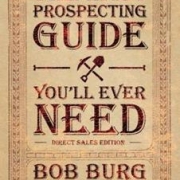It’s the Chef, Stupid, Not the Food or the Decor
The latest Forbes Special Issue devotes an entire page to restaurant reviews:
- “Lively French bistro with Austrian overtones in menu and decor, epitomized by its sensational schnitzel Viennoise.”
- “Magnificent Middle Eastern meals, especially the breads and spreads.”
- “Blonde wood room effectively fuses two of the world’s greatest cuisines: Japanese and Peruvian.”
As a person who appreciates both good food and good content, I couldn’t help thinking that, of the 25 different descriptions of sumptuous eateries, all highly complimentary, there was only one that stood out above the rest:
“Iconic chef Marcus Samuelson’s new restaurant reflects the fusion of his birthplace Ethiopia and his adoptive home of Sweden, where he was raised. The blending of the two influences is astonishingly successful in one delectable dish after another.”
In another Forbes article, one published more than ten years ago, “5 Keys to Successful Small Business Marketing”, Ty Kiisel wrote, “Because business is personal, sharing a little of yourself makes you more accessible. People like doing business with other people. Over the years,” Kiisel revealed, “my readers have gotten to know me because I share with them some of the details of my life.”
The Forbes restaurant reviewer, by sharing information about the chef, not only about the food, made me feel that I was meeting a person, not merely being presented with a product.
In content marketing, we teach at Say It For You, stories that “humanize” the owners and workers, even stories about past mistakes and struggles, tend to generate feelings of admiration for – and trust in – the entrepreneurs or professional practitioners who overcame both outside obstacles and the effects of their own early mis-steps.
It comes down to storytelling – Why did those owners choose to do what they do? Where did they come from? What are they most passionate about? What are they trying to add to – or change – about their industry?
It’s the chef, (stupid), not the food or the decor.






Follow us online!